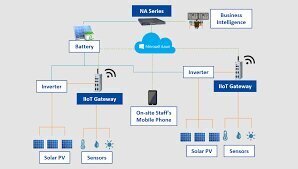Smart Grid Management leverages advanced AI models and frameworks such as Predictive Analytics, Anomaly Detection, and Sensor Fusion to enhance the efficiency, reliability, and safety of modern power grids.
Predictive Analytics
Predictive analytics in smart grids involves using historical and real-time data to forecast future events and trends. This approach helps in identifying potential issues before they become critical, thus allowing for proactive maintenance and resource optimization. For instance, companies like Pacific Gas and Electric (PG&E) and Duke Energy utilize machine learning algorithms to analyze data from smart meters and transformers, predicting equipment failures and scheduling maintenance to prevent disruptions[2]. Predictive maintenance not only reduces downtime but also cuts maintenance costs and improves asset utilization[2].
Anomaly Detection
Anomaly detection is crucial for identifying irregular patterns that may indicate faults or inefficiencies within the grid. This process involves monitoring data from various sensors and devices to detect deviations from normal operations. For example, E.ON has developed AI-powered technology to detect potential faults in the electricity grid before they occur, significantly reducing the occurrence of faults in their medium voltage grids[2]. This enhances system reliability and safety by allowing for timely corrective actions.
Sensor Fusion
Sensor fusion integrates data from multiple sensors to provide a comprehensive view of the grid’s status. This technique enhances the accuracy of data interpretation and decision-making processes. By combining data from smart meters, weather stations, and other IoT devices, utilities can better understand consumption patterns, predict demand, and optimize energy distribution. This holistic approach is essential for managing the complex and decentralized nature of modern smart grids[4].
Real-World Applications
Several real-world applications highlight the benefits of these AI models in smart grid management:
- PG&E (US): Uses data analytics to predict equipment failures and take preventive measures[2].
- Duke Energy (US): Employs predictive maintenance to optimize transformer maintenance schedules[2].
- E.ON (Germany): Implements AI-powered fault detection to enhance grid reliability[2].
- Enel (Italy): Uses predictive maintenance to monitor power line vibrations and reduce outages[2].
Challenges and Future Directions
Despite the advantages, smart grid analytics face challenges such as high initial costs, data privacy concerns, and the need for advanced ICT infrastructure[4]. However, continuous advancements in AI and data analytics are expected to overcome these hurdles, further enhancing the efficiency and reliability of smart grids.
In conclusion, the integration of predictive analytics, anomaly detection, and sensor fusion in smart grid management is transforming the energy sector by enabling proactive maintenance, improving system reliability, and optimizing resource utilization. These technologies are essential for the sustainable and efficient operation of modern power grids.
References:
– [1]
– [2]
– [3]
– [4]
Further Reading
1. The Role of Data Analytics in a Smart Grid | GE Vernova
2. Predictive Maintenance in Smart Grids | CLOU GLOBAL
3. Big data analytics in smart grids: a review | Energy Informatics | Full Text
4. A-Z of Smart Grid Analytics
5. Predictive Analytics: The Future of Smart Grid Reliability


